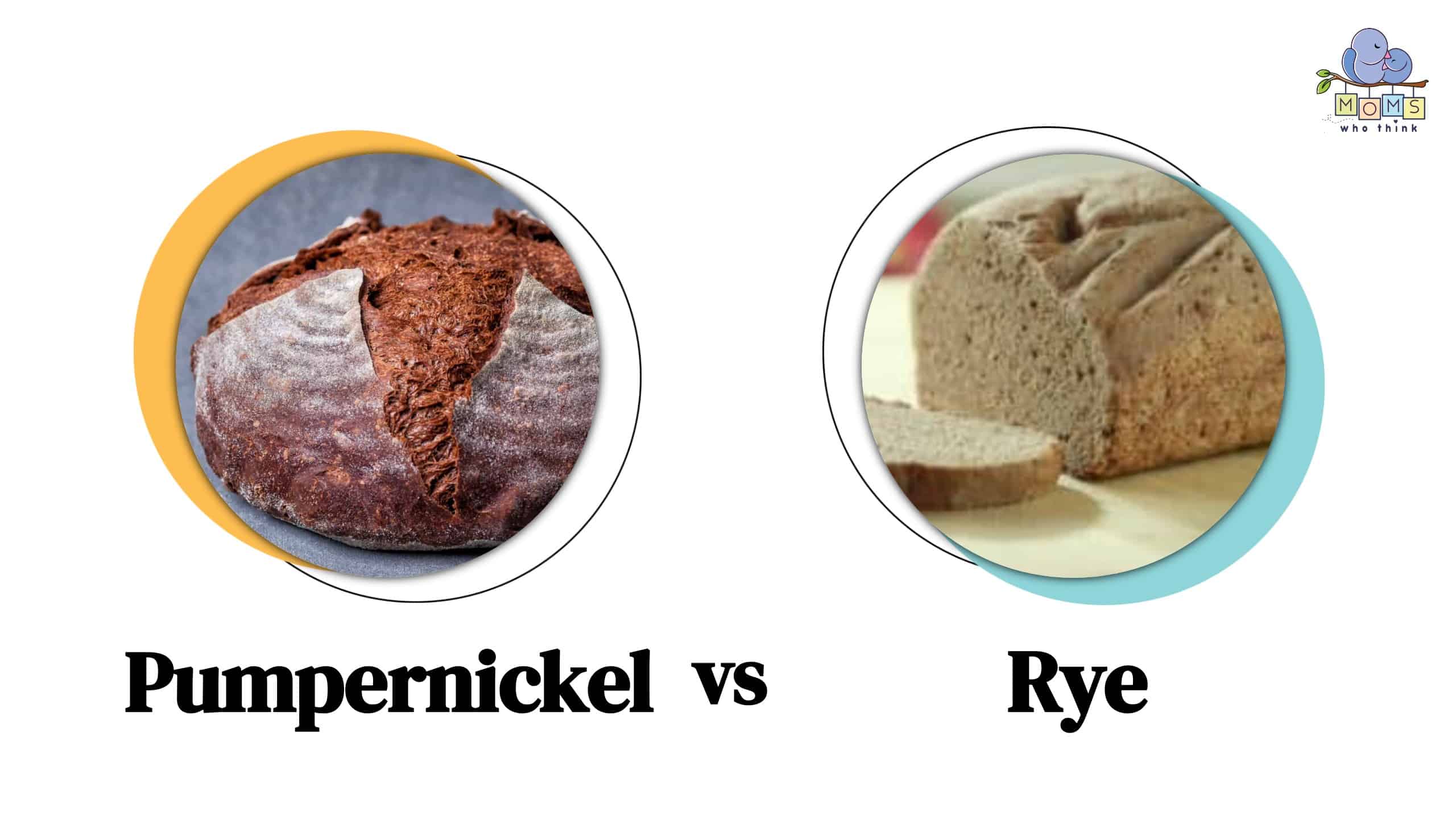Pumpernickel vs. Rye: What makes them different? While they are both breads and similar in many ways, they are unique in making them and how they taste. For example, one of them is made with wheat. They also offer amazing health benefits.
Pumpernickel is often called dark rye because it is a type of rye bread. Looking more into their histories offers insight into what makes these breads unique. In this guide, we look at the history, the process of making the breads, the flavor, and the nutrition behind these breads. You'll better understand why these kinds of breads are different and why they are some of the best breads to make.
What Makes Pumpernickel and Rye Different?
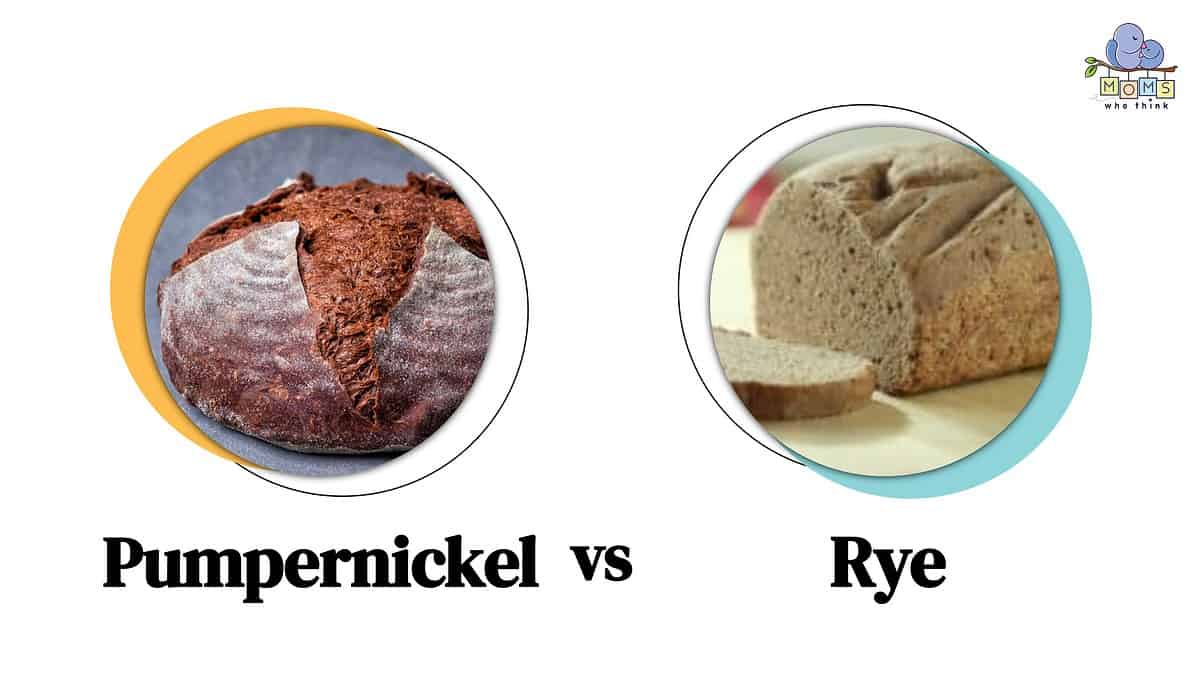
When it comes to the history of rye bread, it's one of the most popular kinds of bread in Europe and Germany. It's said to have originated in Asia and eventually became recognized in Europe. Back then, rye was made for breadmaking and producing alcohol.
- The must-have convenient reference guide for every home cook!
- Includes more than 8,000 substitutions for ingredients, cookware, and techniques.
- Save time and money on by avoiding trips to grab that "missing" ingredient you don't really need.
Looking more at the history between pumpernickel and rye can give you a better idea of how these breads influenced different cultures and why they stand alone.
The History of Pumpernickel vs. Rye
Rye bread originated from the Middle Ages and is considered a staple food. In the 12th century, Germans discovered rye bread when their crops failed. Rye bread comes from the bran and the germ from the grain. While rye bread isn't gluten-free, it does have considerably less gluten than flour or wheat bread.
Throughout the years, different countries have adopted the practice of rye bread. In fact, it's the main bread in France–Germany and North Hungary. While rye comes in the same form as other grains, there are different kinds of rye flour. For example, there is light, medium, and dark rye flour. It refers to the amount of bran and germ in the flour. The darker the flour, the more intense the rye flavor will be.
The difference between rye flour and other flour is that rye often has a fresh, nutty flavor. It's a distinct flavor. It's also described as a malty and earthy flavor.
Pumpernickel has a slightly different history. Its history dates back to 1450 to the Westphalian region of Germany. It's often considered a dark rye bread, distinct from lighter flours. Additionally, this bread differs from rey bread in its abundance of raisins. An interesting fact about pumpernickel is that it's named for a “farting devil.”
Taste Differences
When it comes to flavor differences, pumpernickel bread has a nuttier flavor than other kinds of rye bread. The flavor of the bread is also stronger. Additionally, the pumpernickel tastes a bit sweeter if there are raisins in the bread.
On the other hand, rye bread has a milder flavor. It also has an earthy and malty flavor. One of the best ways to get the most flavor out of rye bread is to pair it with chocolate, nuts, and fruits.
- The must-have convenient reference guide for every home cook!
- Includes more than 8,000 substitutions for ingredients, cookware, and techniques.
- Save time and money on by avoiding trips to grab that "missing" ingredient you don't really need.
The taste will also differ depending on what you eat each bread with. For instance, you can make a sandwich with either bread, but it depends on whether you want the nuttier pumpernickel bread or the milder flavor found in rye bread.
Nutritional Differences
The biggest health difference between rye and pumpernickel is the amount of fiber in rye bread compared to pumpernickel. Fiber is a critical part of digestion and lowering cholesterol. One of the reasons it has so much fiber is because of the whole-grain wheat flour used to make the bread.
Another key health ingredient that promotes a healthy heart is the amount of whole grains in the bread. At the same time, rye bread has slightly more, which is rich in antioxidants and vitamins. Another benefit of both breads is that they help with weight loss. When eaten in moderation, with their fiber-rich ingredients, pumpernickel, and rye help give the feeling of fullness. Eating this kind of bread also aids in digestion. These breads are also lower in calories when compared to other breads like sourdough and white bread.
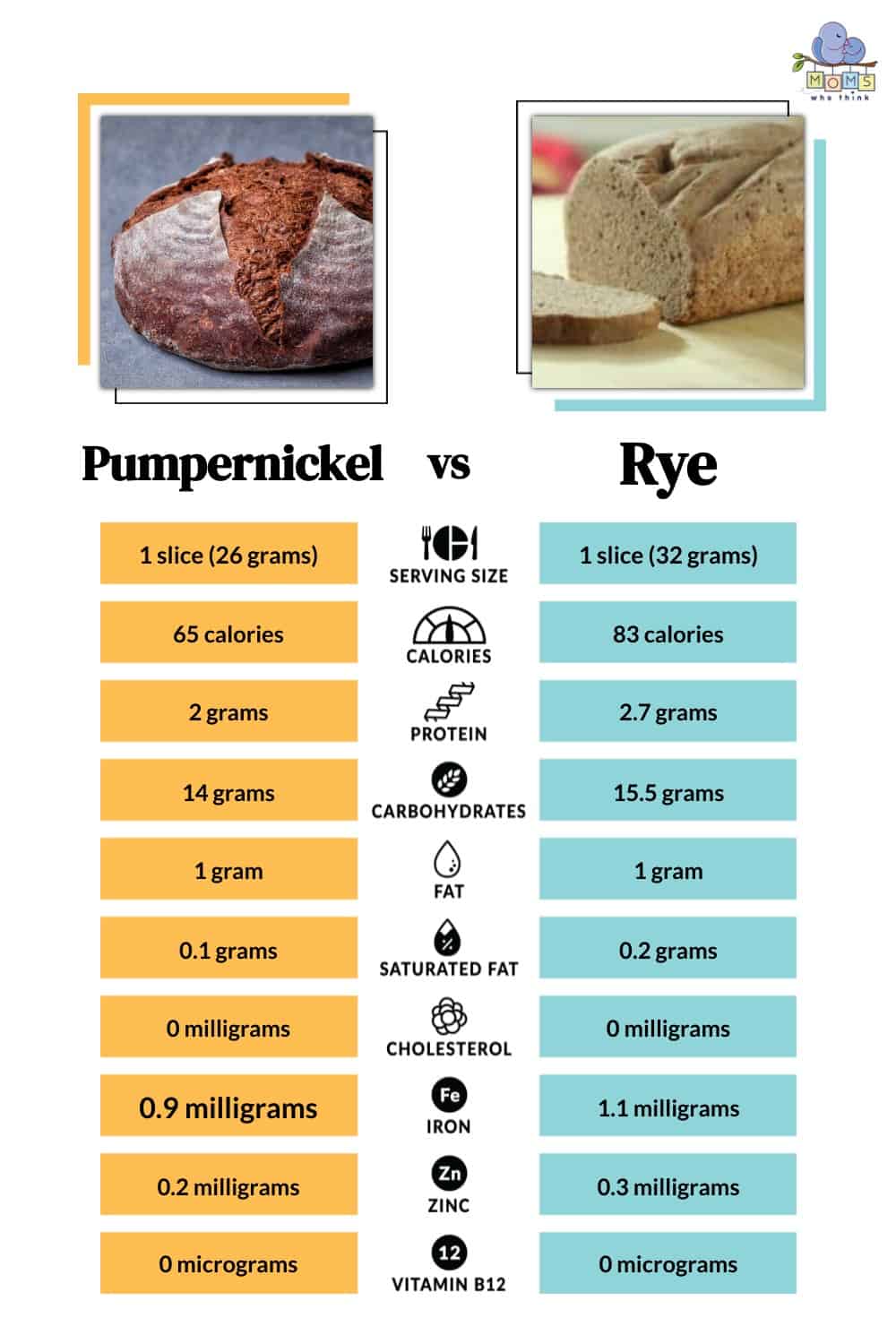
Pumpernickel vs. Rye: What's the Better Choice?
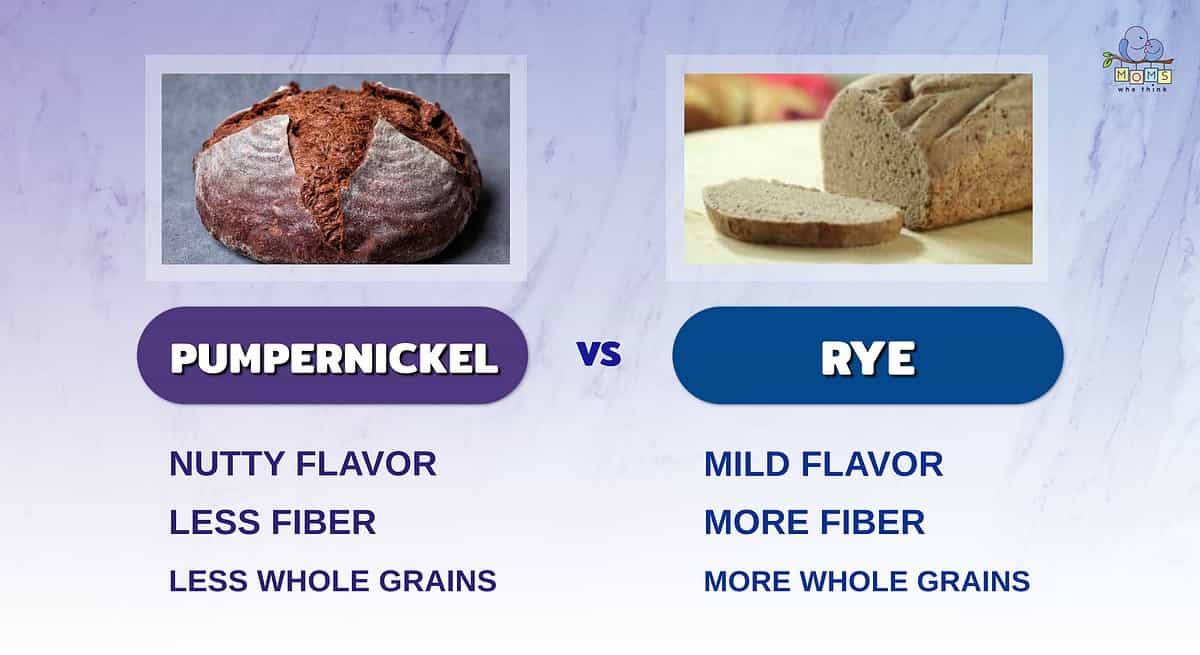
Pumpernickel and rye offer a nutty and sweeter flavor than other kinds of bread. While they are different, they offer a lot of the same nutrition. They are great for digestion and losing weight when eating moderately.
Either bread is also perfect for breakfast, lunch, or dinner. It's perfect for toast, sandwiches, or to complement soup. Choosing between pumpernickel and rye is a matter of preference. You'll ultimately discover that both breads are healthy and delicious.
Print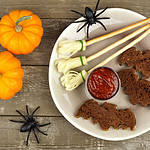
Bat Sandwiches Recipe
Ingredients
- 3 cups shredded sharp Cheddar cheese
- 1 8–ounce container of chive and onion flavored cream cheese, softened
- 1 4–ounce jar of diced pimento, drained
- 24 whole wheat or pumpernickel bread slices
Instructions
- Stir together first three ingredients.
- Using a 3-4 inch bat cookie cutter, cut two bats from each slice of bread.
- Spread about 2 tablespoons of filling over 24 bats. Top with remaining 24 bats.
